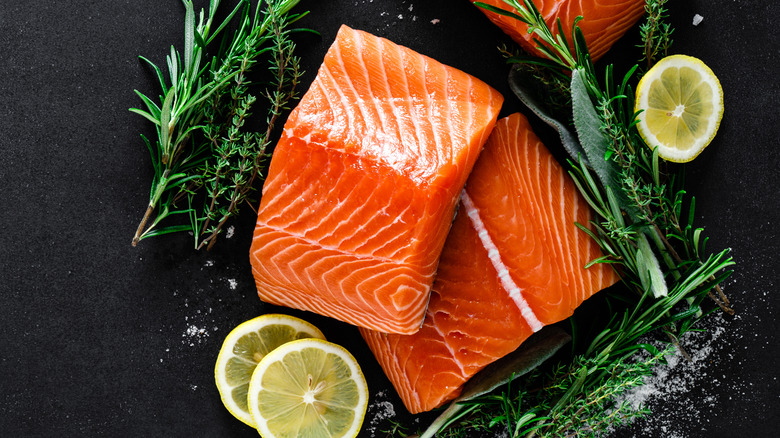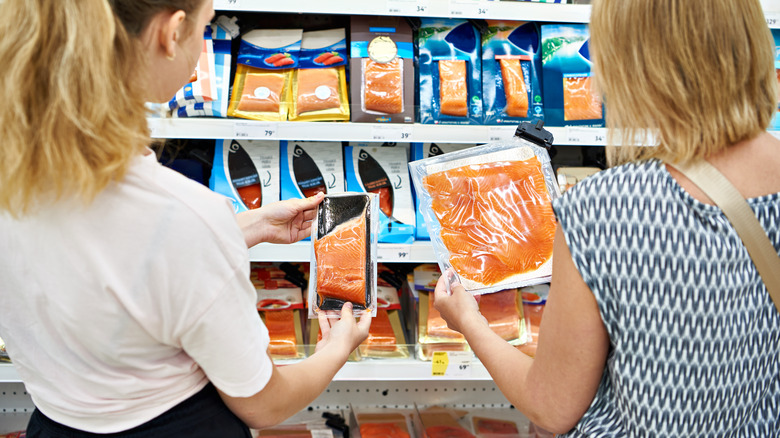Is It Safe To Eat Raw Salmon?
You'd never think to eat undercooked chicken or a raw pork chop, and even very rare steak is iffy, but when it comes to salmon, you could go either way. Nothing quite compares to lox on a bagel, and if you go out for sushi, there's a good chance you'll end up ordering salmon sashimi. In its raw state, salmon tastes pure and unrefined without being overly fishy, and it has a uniquely buttery texture you just can't get from cooked salmon.
Many prefer to consume it raw, but the question remains: Is it actually safe to do so? Healthline says yes, but not without risk. Even if you're eating salmon fresh out of the ocean, the fish can still be ridden with bacteria and parasites absorbed from the natural environment. The only way to kill these pathogens would be to cook the salmon to at least 145 degrees Fahrenheit. When you eat salmon raw, therefore, you risk contracting a foodborne illness.
What salmon is safest to eat raw?
Unless you decide to bring your salmon to a lab and test it, there's really no way of knowing for sure if your salmon is 100% safe to eat raw. However, knowing what to look for at the grocery store certainly helps. The Grocery Store Guy claims that farm-raised, flash-frozen salmon is the safest option. Because farm-raised salmon are fed a controlled diet, whereas wild-caught salmon openly consume prey potentially infected with parasites, they're much safer to eat raw.
Look for packaging that specifies "farmed Atlantic salmon" or "farmed Alaskan salmon." These will typically be labeled "safe for raw consumption" as well. You might also see "sushi-grade" on some labels, but The Grocery Store Guy says this is only marketing jargon. Since parasites are killed at -31 degrees Fahrenheit, you're better off looking for salmon specifically labelled as "flash-frozen" over "sushi-grade." But, if you already bought your salmon and are unsure of it's quality, it's probably best to cook it rather than risk eating it raw.

